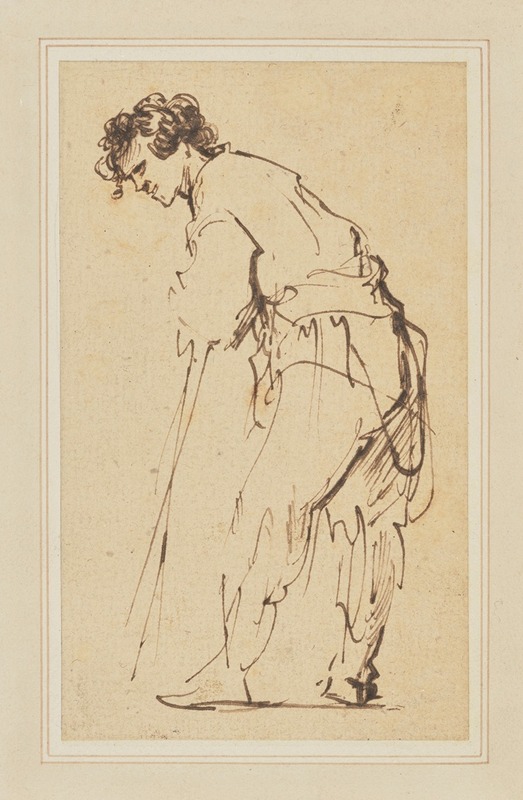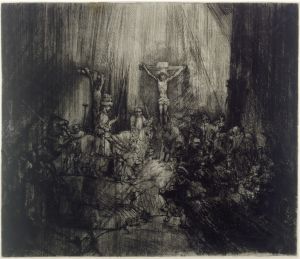
Young Man Leaning on a Stick
A hand-painted replica of Rembrandt van Rijn’s masterpiece Young Man Leaning on a Stick, meticulously crafted by professional artists to capture the true essence of the original. Each piece is created with museum-quality canvas and rare mineral pigments, carefully painted by experienced artists with delicate brushstrokes and rich, layered colors to perfectly recreate the texture of the original artwork. Unlike machine-printed reproductions, this hand-painted version brings the painting to life, infused with the artist’s emotions and skill in every stroke. Whether for personal collection or home decoration, it instantly elevates the artistic atmosphere of any space.
"Young Man Leaning on a Stick" is a painting attributed to the Dutch master Rembrandt van Rijn, one of the most renowned artists of the Dutch Golden Age. The painting is believed to have been created in the early 17th century, a period when Rembrandt was developing his distinctive style characterized by dramatic lighting and intricate detail.
The artwork depicts a young man, casually leaning on a stick, captured in a moment of introspection. The subject's attire is typical of the period, with a focus on texture and the play of light on fabric, which are hallmarks of Rembrandt's work. The young man's expression is contemplative, inviting viewers to ponder his thoughts and the narrative behind the scene.
Rembrandt's use of chiaroscuro, the strong contrast between light and dark, is evident in this painting. This technique not only adds depth and volume to the figure but also enhances the emotional intensity of the scene. The background is kept relatively simple, allowing the viewer's attention to remain focused on the subject.
The painting is a fine example of Rembrandt's ability to convey human emotion and character through subtle details and masterful brushwork. His portraits and figure studies often explore themes of human nature, and "Young Man Leaning on a Stick" is no exception. The young man's posture and expression suggest a moment of pause or reflection, a common theme in Rembrandt's oeuvre.
While the exact date of the painting's creation is not definitively known, it is generally placed within the early to mid-1630s, a period when Rembrandt was gaining prominence in Amsterdam. During this time, he was known for his portraits and historical scenes, which were highly sought after by patrons.
The painting's provenance, or history of ownership, is not extensively documented in public records. However, works by Rembrandt have been widely collected and studied, with many pieces held in major museums and private collections around the world. The attribution to Rembrandt is based on stylistic analysis and comparison with other works from the same period.
"Young Man Leaning on a Stick" exemplifies Rembrandt's skill in capturing the essence of his subjects, making them timeless and relatable. His ability to infuse his paintings with psychological depth and realism has cemented his reputation as one of the greatest painters in Western art history.
As with many works from the 17th century, the painting may have undergone restoration and conservation efforts to preserve its condition. These processes are crucial for maintaining the integrity of historical artworks, allowing future generations to appreciate their beauty and significance.
In summary, "Young Man Leaning on a Stick" is a testament to Rembrandt's mastery of portraiture and his profound understanding of human emotion. The painting continues to be admired for its technical excellence and the subtlety with which it captures a moment of quiet reflection.


















